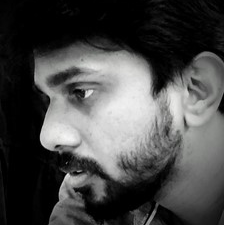Femtosecond Laser-Induced Microfabrication
A special issue of Photonics (ISSN 2304-6732). This special issue belongs to the section "Optical Interaction Science".
Deadline for manuscript submissions: closed (30 July 2023) | Viewed by 5480
Special Issue Editor
Interests: ultrafast material processing; laser induced material modification; ultrafast laser surface structuring; laser induced periodic surface structures (LIPSS); generation and manipulation of higher order vortex beams; direct writing with complex light fields; beam with OAM; LIBS; lidar range finder
Special Issue Information
Dear Colleagues,
In the past decade, laser pulses at femtosecond timescale have been extensively utilized in material processing, especially for precise materials structuring at the micro- and nano-scales that enables surface functionalization towards the control of optical, mechanical, or chemical surface properties in research as well as industrial-scale applications. While compared with other prevailing methods such as lithography, etching, sputtering and chemical vapour deposition, laser-based material processing have many unique advantages. Ultrafast material processing provides a robust, single-step, high-speed surface and bulk structuring technique that does not require any particular processing environment and can be done in ambient air, thus, avoiding expensive and time-consuming vacuum technologies or post-processing. The extremely short pulse duration and high peak power of femtosecond lasers enable the processing of any solid material, including transparent materials.
We are pleased to invite you to submit high impact fundamental research as well as applications of laser material processing. The journal welcomes both experimental and theoretical (simulation) research. The researchers are encouraged to publish their experimental and theoretical results with all the necessary details so that the results can be reproduced. There is no restriction on the number of pages.
This Special Issue aims at presenting original research articles dealing with ultrafast laser material processing and underlying mechanisms with special emphasis on the novel applications of structured surfaces. In this Special Issue, original state-of-the-art research articles and reviews are welcome. Research areas may include (but are not limited to) the following:
- Femtosecond laser surface structuring
- Laser induced periodic surface structuring (LIPSS)
- Micro- and nano-structuring of materials
- Laser induced surface functionalization
- Femtosecond laser engineering of materials
- Ultrafast laser material fabrication
- Laser induced refractive index grating
- Direct writing with femtosecond laser pulse
- Modification of material properties by laser pulses
- Laser processing for integrated optics
- Applications of different structured surfaces
- New phenomena in laser-based material treatments
- Fabrication of photonic integrated elements
Dr. Jijil JJ Nivas
Guest Editor
Manuscript Submission Information
Manuscripts should be submitted online at www.mdpi.com by registering and logging in to this website. Once you are registered, click here to go to the submission form. Manuscripts can be submitted until the deadline. All submissions that pass pre-check are peer-reviewed. Accepted papers will be published continuously in the journal (as soon as accepted) and will be listed together on the special issue website. Research articles, review articles as well as short communications are invited. For planned papers, a title and short abstract (about 100 words) can be sent to the Editorial Office for announcement on this website.
Submitted manuscripts should not have been published previously, nor be under consideration for publication elsewhere (except conference proceedings papers). All manuscripts are thoroughly refereed through a single-blind peer-review process. A guide for authors and other relevant information for submission of manuscripts is available on the Instructions for Authors page. Photonics is an international peer-reviewed open access monthly journal published by MDPI.
Please visit the Instructions for Authors page before submitting a manuscript. The Article Processing Charge (APC) for publication in this open access journal is 2400 CHF (Swiss Francs). Submitted papers should be well formatted and use good English. Authors may use MDPI's English editing service prior to publication or during author revisions.
Keywords
- femtosecond laser surface structuring
- laser induced periodic surface structuring (LIPSS)
- micro- and nano-structuring of materials
- laser induced direct writing and surface functionalization
- laser processing for integrated optics





